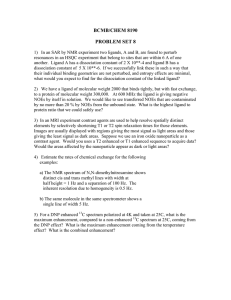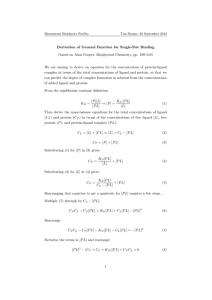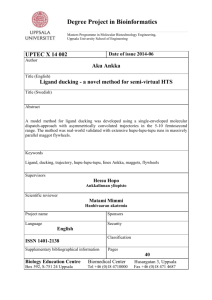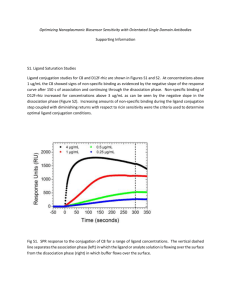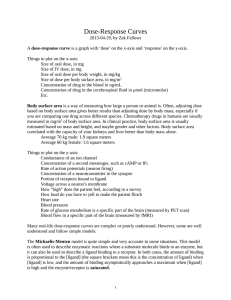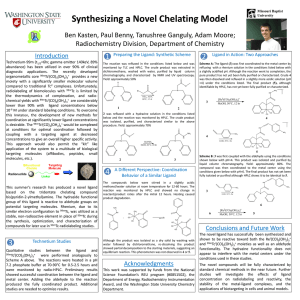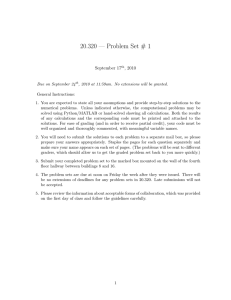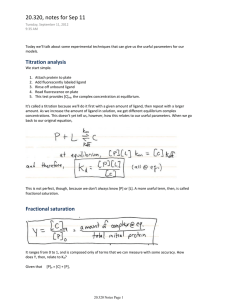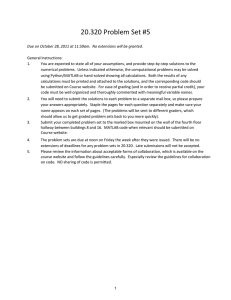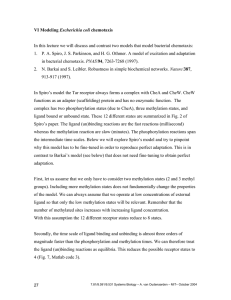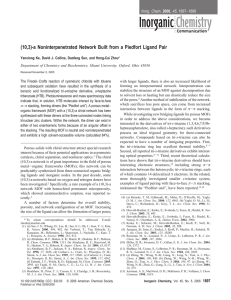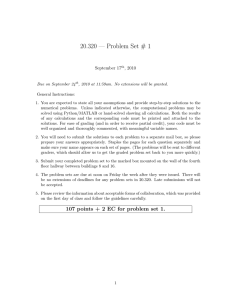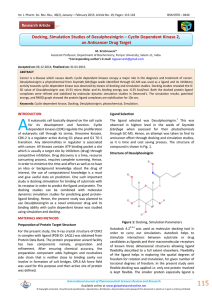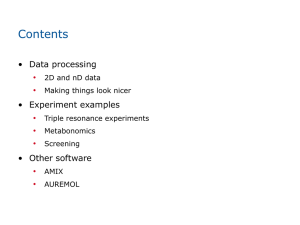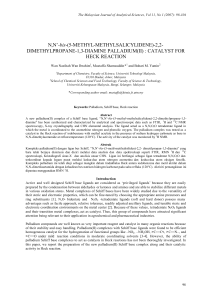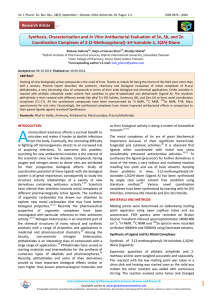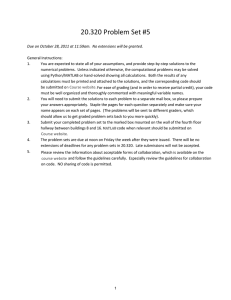BCMB/CHEM 8190 PROBLEM SET 8
advertisement
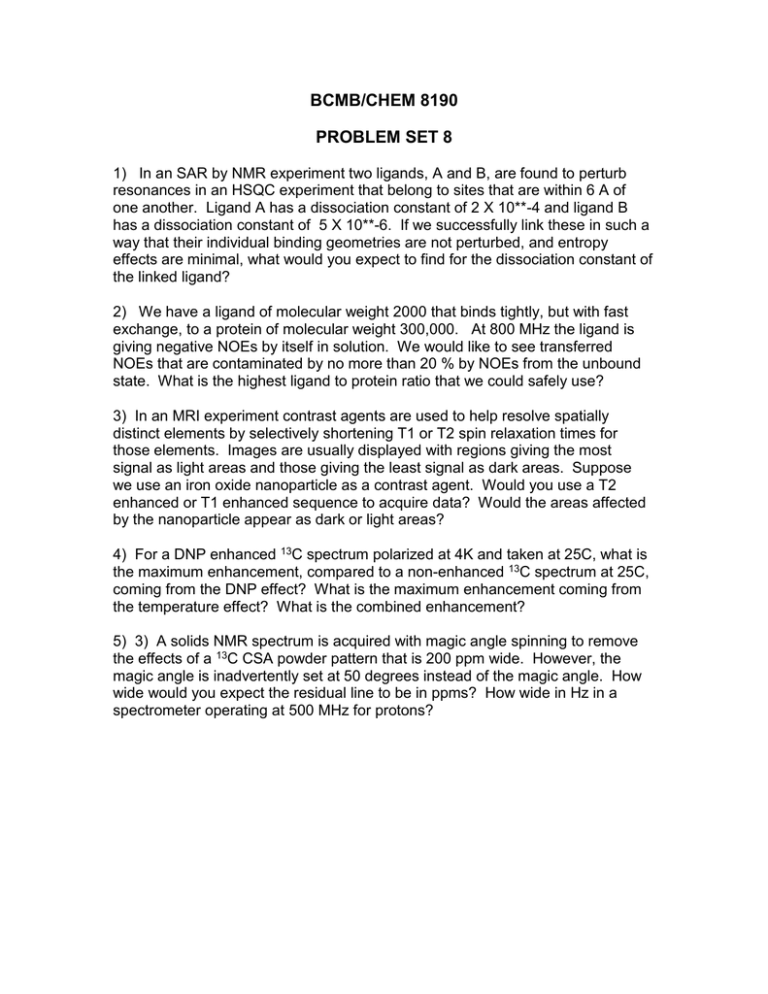
BCMB/CHEM 8190 PROBLEM SET 8 1) In an SAR by NMR experiment two ligands, A and B, are found to perturb resonances in an HSQC experiment that belong to sites that are within 6 A of one another. Ligand A has a dissociation constant of 2 X 10**-4 and ligand B has a dissociation constant of 5 X 10**-6. If we successfully link these in such a way that their individual binding geometries are not perturbed, and entropy effects are minimal, what would you expect to find for the dissociation constant of the linked ligand? 2) We have a ligand of molecular weight 2000 that binds tightly, but with fast exchange, to a protein of molecular weight 300,000. At 800 MHz the ligand is giving negative NOEs by itself in solution. We would like to see transferred NOEs that are contaminated by no more than 20 % by NOEs from the unbound state. What is the highest ligand to protein ratio that we could safely use? 3) In an MRI experiment contrast agents are used to help resolve spatially distinct elements by selectively shortening T1 or T2 spin relaxation times for those elements. Images are usually displayed with regions giving the most signal as light areas and those giving the least signal as dark areas. Suppose we use an iron oxide nanoparticle as a contrast agent. Would you use a T2 enhanced or T1 enhanced sequence to acquire data? Would the areas affected by the nanoparticle appear as dark or light areas? 4) For a DNP enhanced 13C spectrum polarized at 4K and taken at 25C, what is the maximum enhancement, compared to a non-enhanced 13C spectrum at 25C, coming from the DNP effect? What is the maximum enhancement coming from the temperature effect? What is the combined enhancement? 5) 3) A solids NMR spectrum is acquired with magic angle spinning to remove the effects of a 13C CSA powder pattern that is 200 ppm wide. However, the magic angle is inadvertently set at 50 degrees instead of the magic angle. How wide would you expect the residual line to be in ppms? How wide in Hz in a spectrometer operating at 500 MHz for protons?
